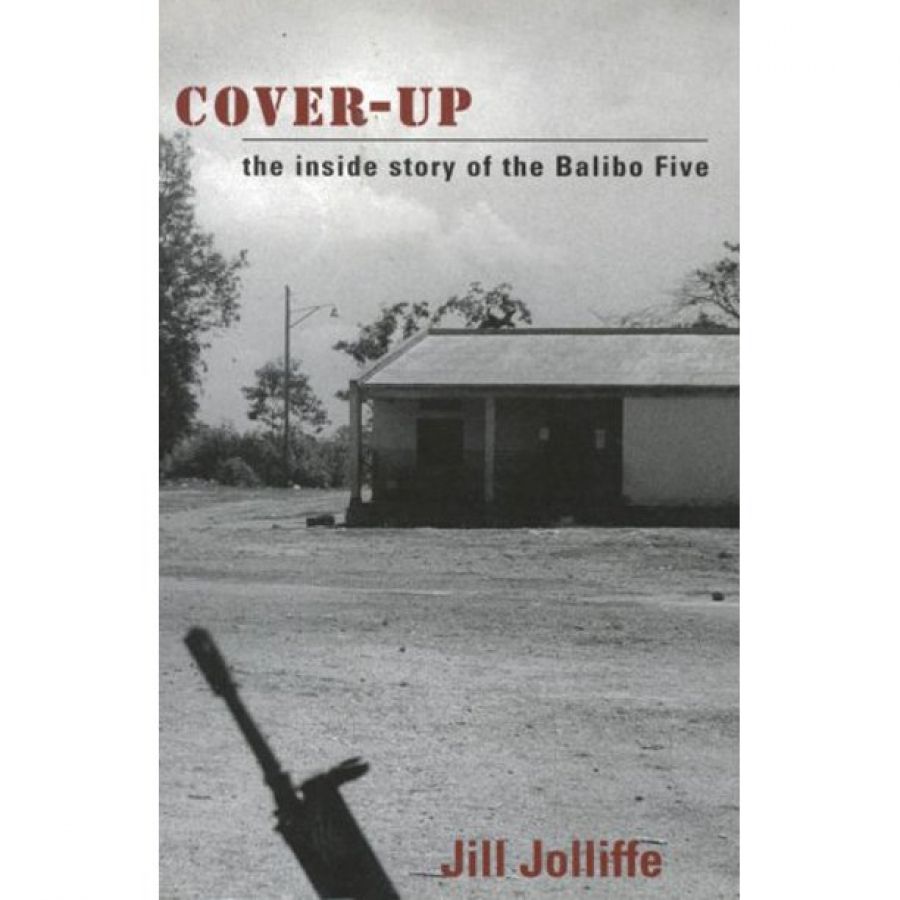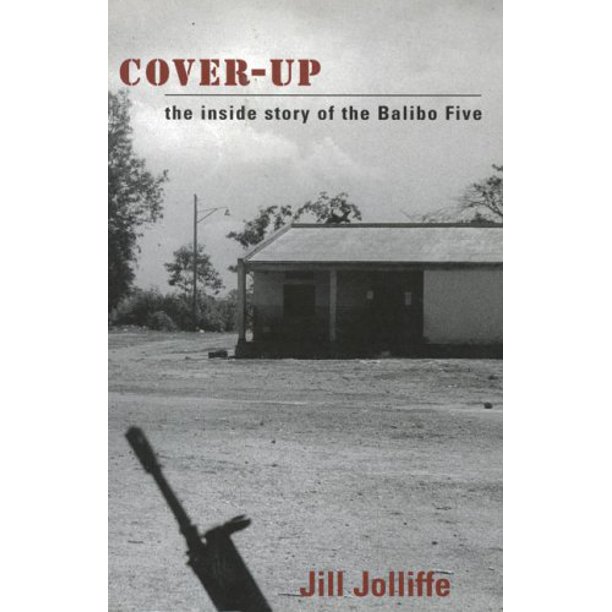
- Free Article: No
- Contents Category: Politics
- Review Article: Yes
- Article Title: Justice in East Timor
- Online Only: No
- Custom Highlight Text: Jill Jolliffe was one of only two reporters in Dili on 16 October 1975, the day the Australian-based newsmen, soon to be known as the Balibo Five, went missing after an Indonesian attack on the small East Timorese border town of Balibo. Jolliffe filed for AAP Reuters the first reports of the attack that killed them, and monitored the ominous broadcasts from Indonesian-controlled West Timor that referred to the missing newsmen as Australian communists who were supporting Fretilin forces. Jolliffe interviewed the Portuguese journalists who had left Balibo the day before the attack and the Fretilin troops themselves who defended the town. Finally, eleven days after the attack on Balibo, she spoke to an eyewitness, a stretcher-bearer from the Fretilin side, who confirmed that the journalists had been killed in the attack.
- Book 1 Title: Cover-Up
- Book 1 Subtitle: The inside story of the Balibo Five
- Book 1 Biblio: Scribe, $35 pb, 347 pp
- Book 1 Cover Small (400 x 600):

For many journalists, the story would have ended there, but the events on the border that day and the immediate attempts by the Australian government to obfuscate the details of the five men’s deaths went much deeper than that. Australia and, by extension, the USA and Britain were about to sacrifice the East Timorese to their fate. In the words of Timor specialist Jim Dunn, ‘this was the point of no return’. By refusing to protest about the deaths of the journalists, the Australian government sent the clear signal to Jakarta that the military annexation of East Timor would not be challenged – and it wasn’t. In fact, the Australian government knew full well the fate of the newsmen. They had been killed during an Indonesian military-led attack on the town, and the Australian government had information from monitored Indonesian military communications to that effect. In Cover-Up, this is all laid out in detail in a way that has never been done before. Jolliffe has painstakingly left no avenue of enquiry unpursued in a work that identifies not only those Indonesian officers who pulled the trigger and, in one case, thrust the knife, that killed the journalists, but – perhaps more importantly for readers in Australia – those Australian Department of Foreign Affairs officials whose bureaucratic acquiescence to the lies surrounding the deaths caused as much suffering to the families of those killed in Balibo as the news of their murder at the hands of the Indonesian military.
Jolliffe’s incredible attention to detail and depth of knowledge on this subject extends to the families of the Five. The callousness of their treatment at the hands of the Department of Foreign Affairs is heightened by the evidence we now have that the department was lying all along. The funeral service, held against the families’ wishes in Jakarta, where the supposed remains of the journalists were buried, and the rather brutal treatment of Maureen Tolfree, sister of Brian Peters, when she tried to attend the funeral, reinforce the picture of the shabby treatment afforded the victims’ families by the department. The department was at that time engaged in a cover-up of the circumstances of the deaths and the persistent enquiries must have twigged away at the consciences of men such as Australia’s ambassador to Jakarta at the time, Richard Woolcott, who knew exactly what had happened, even as he told the families and the press another story.
It didn’t take long for the Indonesian military to interpret the silence over the deaths as a signal to act in East Timor. As Jolliffe recounts, ‘only two days after the sad farce of a ceremony in Jakarta, Indonesian paratroopers landed in Dili’. Only one journalist was left at this stage, Australian Roger East, but his fate was sealed. Jolliffe writes of his death on 8 December 1975:
As the Balibo Five were said to have done, he was shouting that he was an Australian and a journalist as he was hit by a hail of bullets. His executioners felt no concern – Balibo and its aftermath had confirmed their impunity. With East’s death, the Indonesian army had achieved its ideal situation in East Timor, the elimination of all independent observers … the invading force was no longer subject to restraint of any kind.
Jolliffe moved to Portugal after the Indonesian take-over and continued to investigate what had happened in Balibo. She located and interviewed more witnesses to the killings to try and establish finally, in the face of ambivalence and obstruction from the Australian government, the truth about those events. She pulls no punches when recounting how other journalists and concerned individuals missed the point in their investigations and allowed their theories on the killings to be coloured by their support or rejection of the Indonesian take-over of East Timor itself.
The ambivalence to the fate of the journalists was mirrored in the sparse press coverage of the unfolding tragedy in East Timor in the late 1970s and 1980s. As Jolliffe works through the story of her investigations, the horrible reality of what was happening in East Timor continues to intrude. One of the Indonesian soldiers responsible for the killing of the journalists, Christoforus da Silva, later took part in the massacres of civilians in the Kraras region of East Timor in 1983. The story of the massacres that Jolliffe uncovers by travelling to the remote region after the Indonesian military finally withdrew sheds light on how the military conducted themselves and how the casual massacres that took place throughout the occupation were ordered at the highest level. In the case of this incident, one of Suharto’s own son-in-laws, the notorious Prabowo Subianto, was responsible for the operation and was ably assisted by da Silva. The account rendered here from the statements of survivors of one of the massacres, in which 181 people were machine-gunned by a river, reads like Holocaust literature and gives a window into the true horror of life under the Indonesian military.
The book covers the Australian INTERFET’s securing of East Timor and the attempts by UN civilian police now working in East Timor to reopen the Balibo case. The problems in bringing the case to trial are enormous and, by the end of the book, very familiar. Political pressure applied by Australia and Indonesia goes on hampering the work of the UN prosecutors. The key accused in these proceedings is the former Information Minister for Indonesia, Yunus Yosfiah, who has been identified as the ‘Major Andreas’ in direct command during the attack on Balibo. Witnesses have now testified that he, along with da Silva, actually shot the journalists. Jolliffe quotes the Indonesian Foreign Minister Alwi Shihab as saying, when news of Yosfiah’s involvement in the killings broke in Jakarta in early 2001, that Indonesia would never extradite Yunus – ‘even if he were proven guilty’.
However, the case is not closed and is unlikely to be closed for a long time. Too many people still in positions of authority in Australia and Indonesia have dirty hands over the whole affair, which extends from the deaths of the journalists to the tacit approval of genocide that was Australia’s policy towards East Timor. Having covered the story from the outset, Jolliffe is better placed than anyone to cut through the distortions and fabrications that have surrounded the whole Balibo case. As Jolliffe concludes, a full judicial inquiry is needed in Australia ‘as much for the nation’s own moral health as to determine how the journalists died’.


Comments powered by CComment